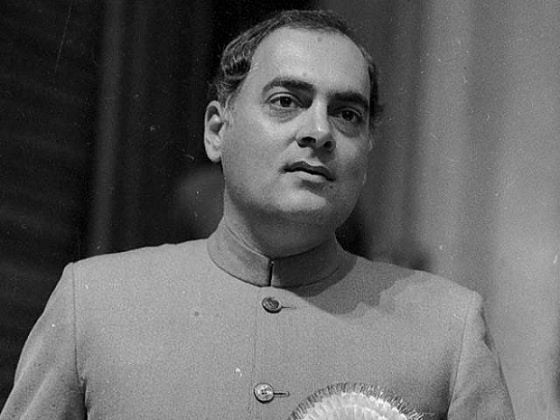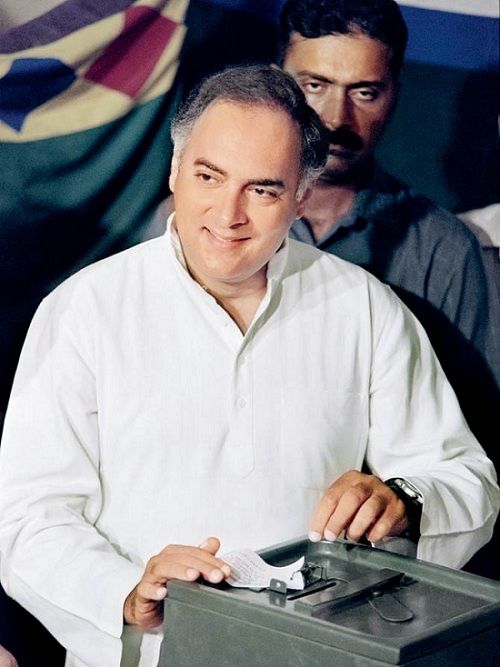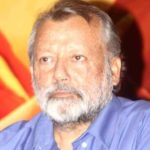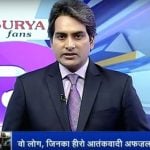Rajiv Gandhi Age, Family, Wife, Caste, Biography & More
| Bio | |
|---|---|
| Full Name | Rajiv Ratna Gandhi |
| Profession | Indian Politician |
| Political Party | Indian National Congress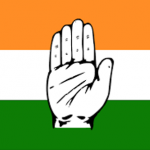 |
| Political Journey | • Upon the command of his mother Indira Gandhi, he reluctantly stepped into politics in 1980 after his brother Sanjay's death. • Following year, he contested from his late brother's constituency, Amethi, and tasted the victory. • To advance his political knowledge, he was made the general secretary of INC in 1982. He was also given the responsibility to organise 1982 Asian Games. • After the assassination of his mother, he was named the Prime Minister of India. |
| Physical Stats & More | |
| Height (approx.) | in centimeters- 178 cm in meters- 1.78 m in Feet Inches- 5’ 10” |
| Weight (approx.) | in Kilograms- 72 kg in Pounds- 159 lbs |
| Eye Colour | Black |
| Hair Colour | Black |
| Personal Life | |
| Date of Birth | 20 August 1944 |
| Place of Birth | Bombay, Bombay Presidency, British India |
| Date of Death | 21 May 1991 |
| Place of Death | Sriperumbudur, Chennai, Tamil Nadu |
| Cause of Birth | Assassination |
| Age (as on 21 May 1991) | 46 Years |
| Birthplace | Bombay, Bombay Presidency, British India |
| Zodiac sign | Leo |
| Nationality | Indian |
| Hometown | Bombay, Bombay Presidency, British India |
| School | Shiv Niketan school Welham Boys' School, Dehradun The Doon School, Dehradun |
| College | Trinity College, Cambridge Imperial College, London Delhi Flying Club, New Delhi |
| Educational Qualifications | Trained Pilot |
| Debut | He joined the Indian National Congress in 1980, after his brother's death and, became an MP from Amethi the very next year. |
| Family | Father- Late Feroze Gandhi (Former Indian Politician) Mother- Late Indira Gandhi (Former Indian Politician) 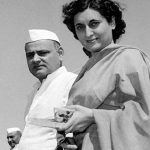 Brother- Late Sanjay Gandhi (Former Indian Politician & trained Pilot) 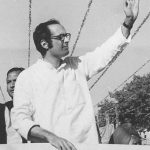 Sister- N/A |
| Religion | Hinduism |
| Caste | Brahmin |
| Hobbies | Cycling |
| Blood Group | O-negative [1]India Today |
| Major Controversies | • Rajiv Gandhi and his team took a controversial decision to a sensitive issue after passing an act in the parliament titled The Muslim Women (Protection of Rights on Divorce) Act, 1986 which nullified the Supreme Court's judgement in the Shah Bano case. A lady named Shah Bano, 62, filed a petition in a local court of Indore after her husband gave her an irrevocable divorce and refused to give any compensation to the lady and her 5 kids. Initially, a local court asked her husband to pay her INR 25 every month, which was later revised by the Madhya Pradesh High Court to INR 179.20/ month. Mohd. Ahmed Khan, the lady's husband, challenged the High Court's decision in the Supreme Court, but the apex court denied his request and confirmed the judgement of High Court. Now came the central government in action and passed the act which stated that maintenance to a divorced woman by her husband will only be given during the period of iddat, or till 90 days after the divorce. • In 1989, the then union finance minister V.P. Singh uncovered a political corruption what became to be known as Bofors Scandal, which involved millions of US dollars and alleged payoffs by the Swedish arms company Bofors through Italian businessman and Gandhi family associate Ottavio Quattrocchi. • Schweizer Illustrierte magazine published an article on black money in 1991. The article cited McKinsey & Company as a source and stated Rajiv held 2.5 billion Swiss francs in secret Indian accounts in Switzerland. • In 1992, the Indian newspapers Times of India and The Hindu published reports alleging that Rajiv Gandhi had received funds from the KGB, a Russian Committee for State Security. The disclosure was later confirmed by the Russian Government and was defended as necessary for Soviet ideological interest. |
| Girls, Affairs and More | |
| Marital Status | Married when died |
| Affairs/Girlfriends | Not Known |
| Wife | Sonia Gandhi (m. 1968-1991)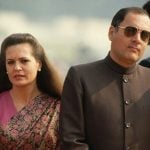 |
| Children | Son- Rahul Gandhi (Indian Politician)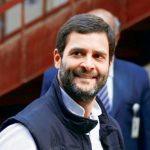 Daughter- Priyanka Gandhi (Indian Politician) 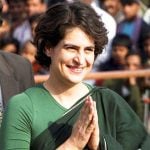 |
Some Lesser Known Facts About Rajiv Gandhi
- Did Rajiv Gandhi smoke: Not Known
- Did Rajiv Gandhi drink alcohol: Not Known
- His teachers at Shiv Niketan School said that he was shy and was inclined towards painting and drawing.
- Trinity College, London offered him a place in Engineering, which he acknowledged and began it the exact same year but did not complete his degree.
- Rajiv fled back to India in 1966 when his mother became the Prime Minister of India. There he joined Delhi flying club and became a trained pilot. Later in 1970, flag carrier airline of India, Air India absorbed him as a pilot.
- Unlike his family, he never wanted to join politics. He joined it only when his mother, the then Prime Minister Indira Gandhi forced him to do so after the death of his brother in an aircraft crash in 1980 which was being flown by Sanjay himself.
- He contested the general elections in 1980 from his late brother’s constituency, Amethi and became an MP in the lower parliament house (Lok Sabha).
- In 1981, Rajiv was elected as the president of Indian Youth Congress.
- Party wanted him to learn politics and for that, he was named the party general secretary in 1982 and was also given the responsibility to organise the Asian Games that year.
- He took the Prime Minister office on the day his mother was shot dead by two of her own Sikh bodyguards as the retaliation of Operation Blue Star. The assassination was followed by Anti-Sikh riots in the country, on which, Rajiv said, some of them were because of the murder of his mother. “When a tree falls, it is the Earth around that shakes” was the controversial remark he made to justify the mass murders.
- The first thing that Rajiv did after taking up as the PM was passing Anti-defection law which prevented any MP or MLA from joining any other political party until next elections.
- Though there was no mention of economic policy in his 1984 election manifesto, he did give it a try to liberalise the nation’s economy, and for that, he started providing incentives to make private production profitable. He started giving subsidies to the corporate companies to increase industrial production, especially of durable goods. His own party members criticised these moves terming them to be ‘pro-rich’ and ‘pro-city reforms.’
- Rajiv nearly escaped death in 1987, thanks to his reflexes. He himself narrated the incident that when he saw a slight movement through the corner of his eye while inspecting the guard of honour. He said the ducking that he did right at the moment of shooting prevented the bullet from penetrating into his head and that the burnt gunpowder fell on his shoulder below the left ear. The guard who fired the bullet told that his intention was to finish Gandhi for the damage he (Rajiv) has caused to Sri Lanka.
- While he was in the office, the parliament saw a number of changes in the cabinet to which, the opposition leaders said: “The Cabinet change reflects the instability of the Congress Government at the Centre.”
- It was in 1986 when Public Sector telecom companies like MTNL and VSNL were established and developed during Rajiv’s time in office. In the era where telephones were a luxury item and were considered for just rich, Rajiv made it possible for common mass to afford it. The seed of Information Technology (IT) revolution was sowed by none other than Rajiv Gandhi.
- He initiated Operation Black Thunder in 1988 in order to clear the Golden Temple, Amritsar of arms and gunmen. Two groups named National Security Guard and Special Action Group were created, which surrounded the temple for about 10 days during which extremists’ weapons were confiscated. This operation was to bring peace to Punjab.
- May 1991 was the last time India got to listen to him. He was at Sriperumbudur, a village near Chennai, where he was assassinated while campaigning for the Sriperumbudur Lok Sabha Congress candidate. A woman who was later identified as Thenmozhi Rajaratnam approached him in public and greeted him. A belt that had about 700gm of RDX explosives detonated when she bent down to touch Gandhi’s feet.
- Later in 1991, the Indian Government posthumously awarded him Bharat Ratna, the nation’s highest civilian honour. ‘Revolutionary Leader of Modern India’ was another honour awarded posthumously to Rajiv in 2009 at the India Leadership Conclave.
- Indian Government later built the Rajiv Gandhi Memorial (Ninaivagam), in Sriperumbudur, India, the place where he was assassinated.
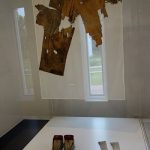
References/Sources:

